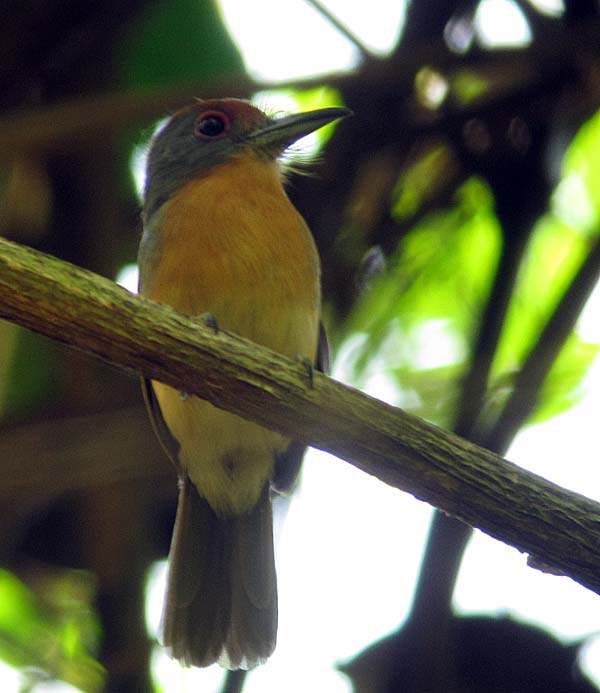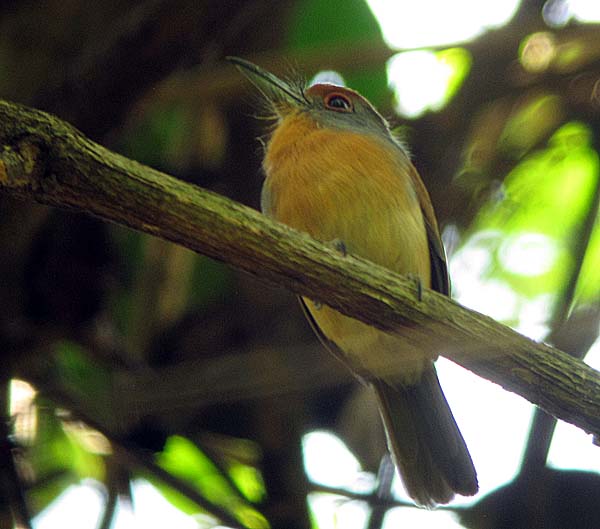Cristalino Montage – Row 7
Two insects and four birds are in this week’s row of photos from my Cristalino Jungle Lodge montage.
As a quick reminder of what this blog is about, I hastily threw together this photo sheet as a summary of my 10-week stay at this fabulous lodge in Amazonian Brazil. Keep in mind that while the montage has only 48 photos, I took an average of 300 photos each day, and I’ve managing to pare them down to about 10% of that. I’m still working on that project, and will be doing so for a few more weeks.
The first is a bug – no really, it is a bug! In English, “bug” is usually used to refer to any little beast with an exoskeleton and jointed legs, but the only true bugs are those insects in the order Hemiptera. If the most familiar true bugs are stink bugs (family Pentatomidae) then maybe members of the family Fulgoridae are the least familiar, at least to those of us originating in temperate latitudes. But it’s actually a very diverse group in the tropics, and the one in the photo is Pterodictya reticularis, the white tails being a fluffy, waxy substance that grows off the top of the abdomen and breaks off easily. In Costa Rica, this is called “chicharra quetzal” – the quetzal cicada – because of those streamers.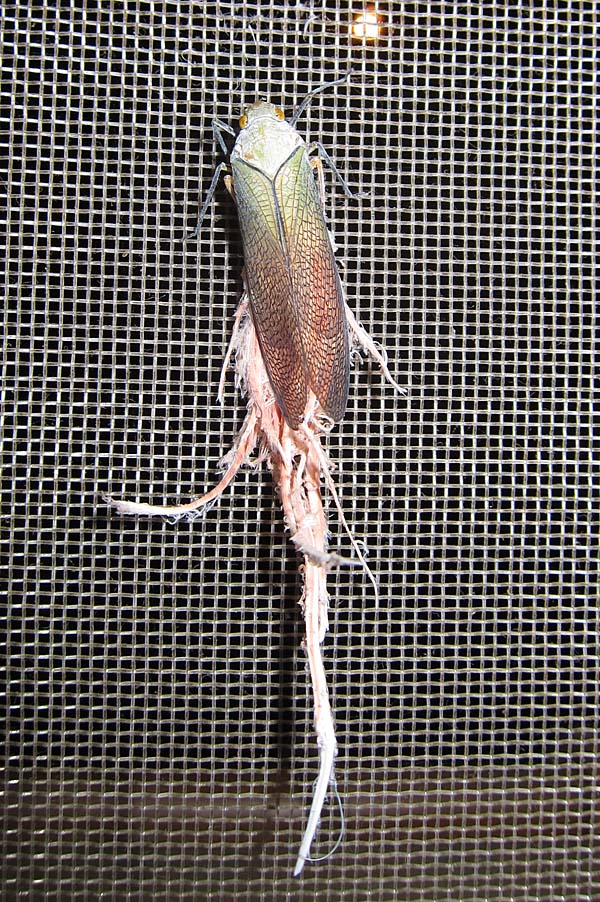
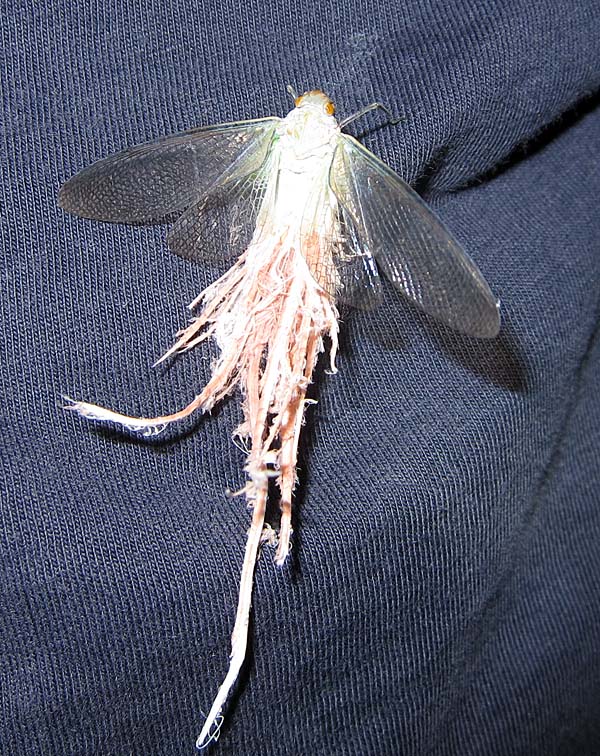
An even fancier fulgorid at Cristalino is Phenax variegata, the only other member of this peculiar subfamily. Many thanks to Geert Goemans, a Flickr contact, for identifying these.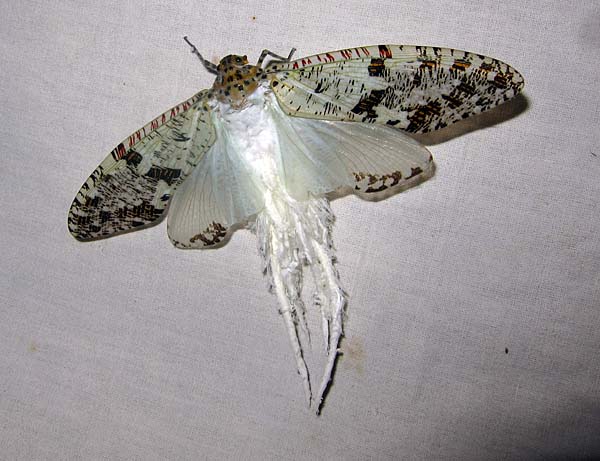
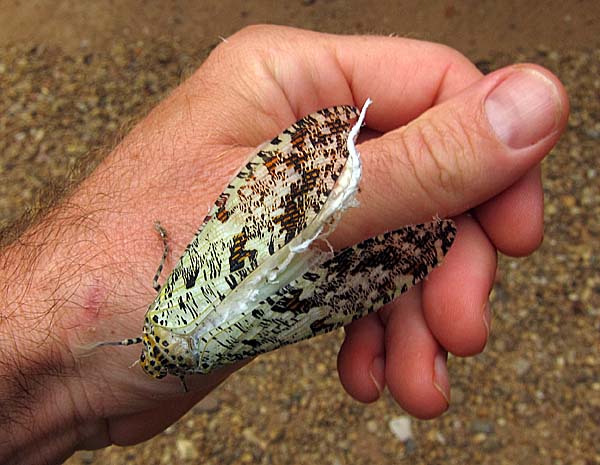
The next photo is a Green-backed Trogon, the Amazonian form split from White-tailed Trogon. Notice the bluish orbital ring.
For comparison is this Amazonian Trogon, part of the former Violaceous Trogon, and one that is easily confused with the Green-backed. The males are readily separable by voice, otherwise you should look at the undertail pattern or the color of the orbital ring – yellow in this species. Despite their being common, I found trogons to be particularly difficult to photograph.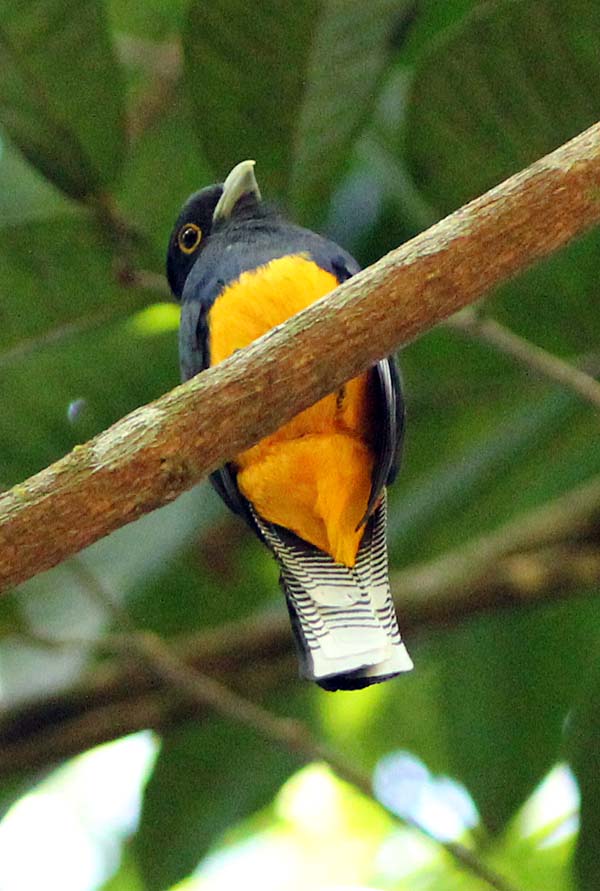
The next two birds were found at the same exact spot on the same morning when Tayler Brooks and I were guiding some birders up on the Serra, a dome of exposed granite that lends a deciduous character to the forest that grows there. Spotted Puffbird is the first, and one of the scarcest members of the family here.
A much more common one is the Striolated Puffbird, even if not seen so often. This particular male sang for hours every day, weeks on end, from around the lodge clearing.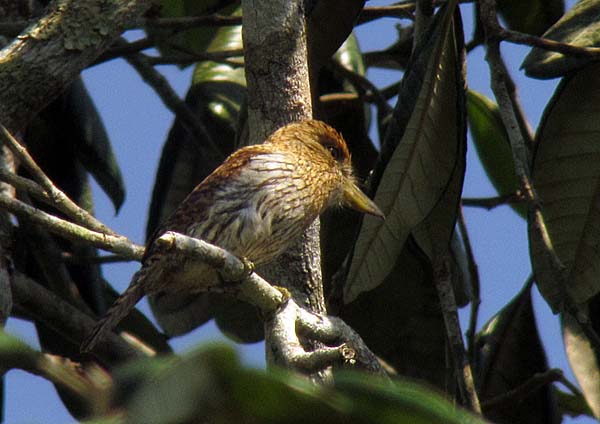
And here’s one more puffbird to round out the family – another canopy dweller, Brown-banded Puffbird. As it’s usually seen at quite a distance from one of the two observations towers, I digiscoped this one.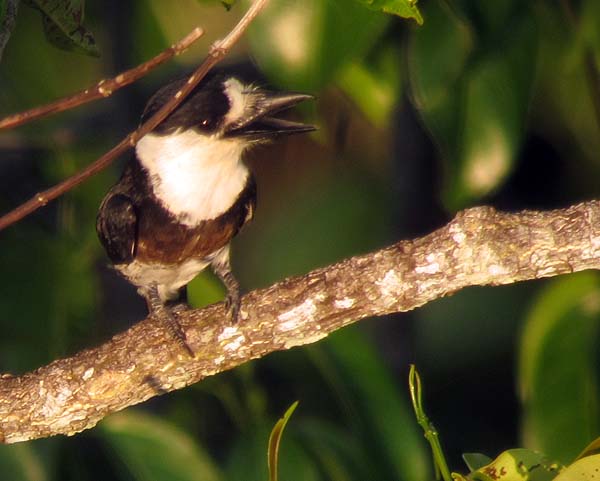
The other bird at the Serra that morning was a Slender-billed Xenops. This bird sticks to the canopy and while scarce (and certainly rarer than Plain Xenops) was usually detected by its call, one of those high-pitched sounds that is very easy to overlook.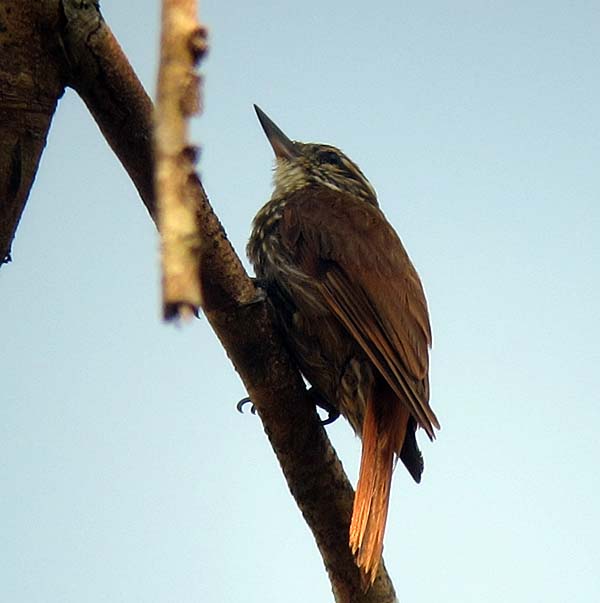
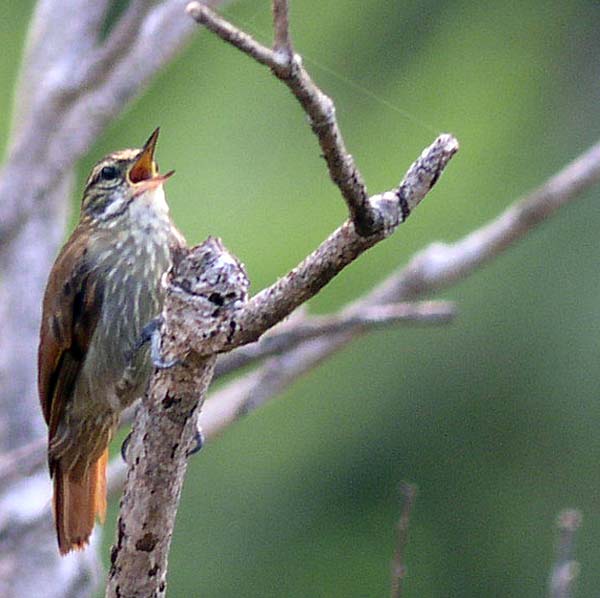
The next photo is another “bug,” but not a true bug. Looking more like a collection glass beads used to make necklaces, or even like an artificially colored and flavored gummi bear, this is actually a caterpillar of an unassuming moth in the genus Acraga, family Dalceridae. Dozens of guests of the lodge ogled the three or four that were feeding on the leaves of a Moluccan Roseapple (also called Otaheite Apple), a non-native fruit tree, in the lodge clearing. Thanks to my friend Jim Brock for identifying it for us.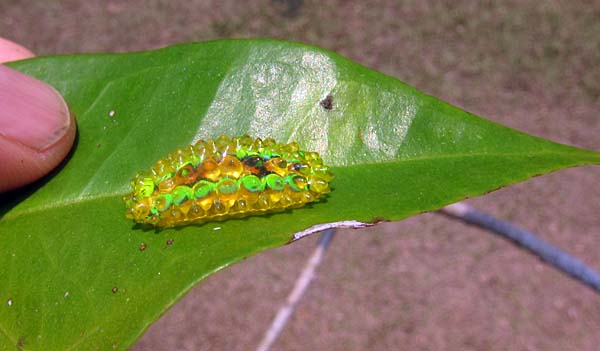

The final photo is a Rufous-capped Nunlet, yet another puffbird (family Bucconidae), but a very distinctive, tiny one, usually buried in the dense tops of vine tangles. Judging from the voice they aren’t rare, but I saw them only about 5 times in 10 weeks, and only on one morning managed to get any kind of photos at all.